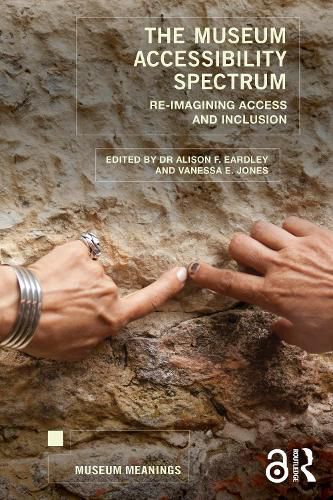Readings Newsletter
Become a Readings Member to make your shopping experience even easier.
Sign in or sign up for free!
You’re not far away from qualifying for FREE standard shipping within Australia
You’ve qualified for FREE standard shipping within Australia
The cart is loading…






The Museum Accessibility Spectrum engages with discussions around access to museums and argues that what is impairing the progress of museums towards inclusion is the current ableist model of access.
Drawing on contributors from international museum researchers, practitioners, artists, and activists, this volume challenges the notion of the core 'able' museum visitor and instead proposes all individuals are positioned on a multidimensional Accessibility Spectrum, which incorporates intersecting physical, sensory, neurodivergent, and social and cultural dimensions. It explores the ways in which access provisions designed to enhance the experience of a minority can enhance the museum experience for all visitors. A constructively critical approach is taken to practice-based chapters, using case studies and approaches from around the globe, split into three main sections. Within the Disability Gain section, the authors consider the benefits of inclusive design, perspectives, and practice for all visitors to the museum sector. The Social and Cultural Inclusion section examines ways in which museums have broadened representation and participation to better serve audiences who have been excluded, or 'underrepresented' by the museums. Finally, the Agents of Social Change section considers how, with this work, museums are challenging systemic biases and exclusions. The international, cross-disciplinary contributions in this volume are driven by research-informed practice and will transform existing thinking to change future practice within the museum sector by challenging this ableist bias.
This book will be of interest and importance not only to museum practitioners and researchers, but also to readers with an interest in cultural studies, critical disability studies, translation studies, and inclusive and universal design.
The Open Access version of this book, available at http://www.taylorfrancis.com, has been made available under a Creative Commons Attribution-Non Commercial-No Derivatives (CC-BY-NC-ND) 4.0 license.
$9.00 standard shipping within Australia
FREE standard shipping within Australia for orders over $100.00
Express & International shipping calculated at checkout
The Museum Accessibility Spectrum engages with discussions around access to museums and argues that what is impairing the progress of museums towards inclusion is the current ableist model of access.
Drawing on contributors from international museum researchers, practitioners, artists, and activists, this volume challenges the notion of the core 'able' museum visitor and instead proposes all individuals are positioned on a multidimensional Accessibility Spectrum, which incorporates intersecting physical, sensory, neurodivergent, and social and cultural dimensions. It explores the ways in which access provisions designed to enhance the experience of a minority can enhance the museum experience for all visitors. A constructively critical approach is taken to practice-based chapters, using case studies and approaches from around the globe, split into three main sections. Within the Disability Gain section, the authors consider the benefits of inclusive design, perspectives, and practice for all visitors to the museum sector. The Social and Cultural Inclusion section examines ways in which museums have broadened representation and participation to better serve audiences who have been excluded, or 'underrepresented' by the museums. Finally, the Agents of Social Change section considers how, with this work, museums are challenging systemic biases and exclusions. The international, cross-disciplinary contributions in this volume are driven by research-informed practice and will transform existing thinking to change future practice within the museum sector by challenging this ableist bias.
This book will be of interest and importance not only to museum practitioners and researchers, but also to readers with an interest in cultural studies, critical disability studies, translation studies, and inclusive and universal design.
The Open Access version of this book, available at http://www.taylorfrancis.com, has been made available under a Creative Commons Attribution-Non Commercial-No Derivatives (CC-BY-NC-ND) 4.0 license.